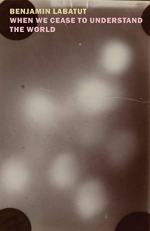|
This section contains 992 words (approx. 3 pages at 400 words per page) |

|
Cyanide
In the novel’s first chapter, cyanide serves as an effective symbol for the way in which scientific knowledge, despite its ability to inflict terrible harm, spreads continually across time and space. “Prussian Blue” details the history of cyanide, and, more specifically, the usage of cyanide as a means of murder and suicide throughout history. Like science itself, cyanide proliferates across generations. Labatut thus reveals the way in which humans choose to cultivate and share certain entities—cyanide, as well as larger scientific advances—even while these entities engender violence and destruction.
The “Terrible Verdure”
The “terrible verdure” (33) that Fritz Haber imagines spreading across the world represents the potentiality for scientific progress to render the world incomprehensible. Haber imagines plant life—usually a symbol of health, growth, and fertility—as instead a cause of violence, suffocation, and death. In a similar manner, Haber’s scientific contributions...
|
This section contains 992 words (approx. 3 pages at 400 words per page) |

|




